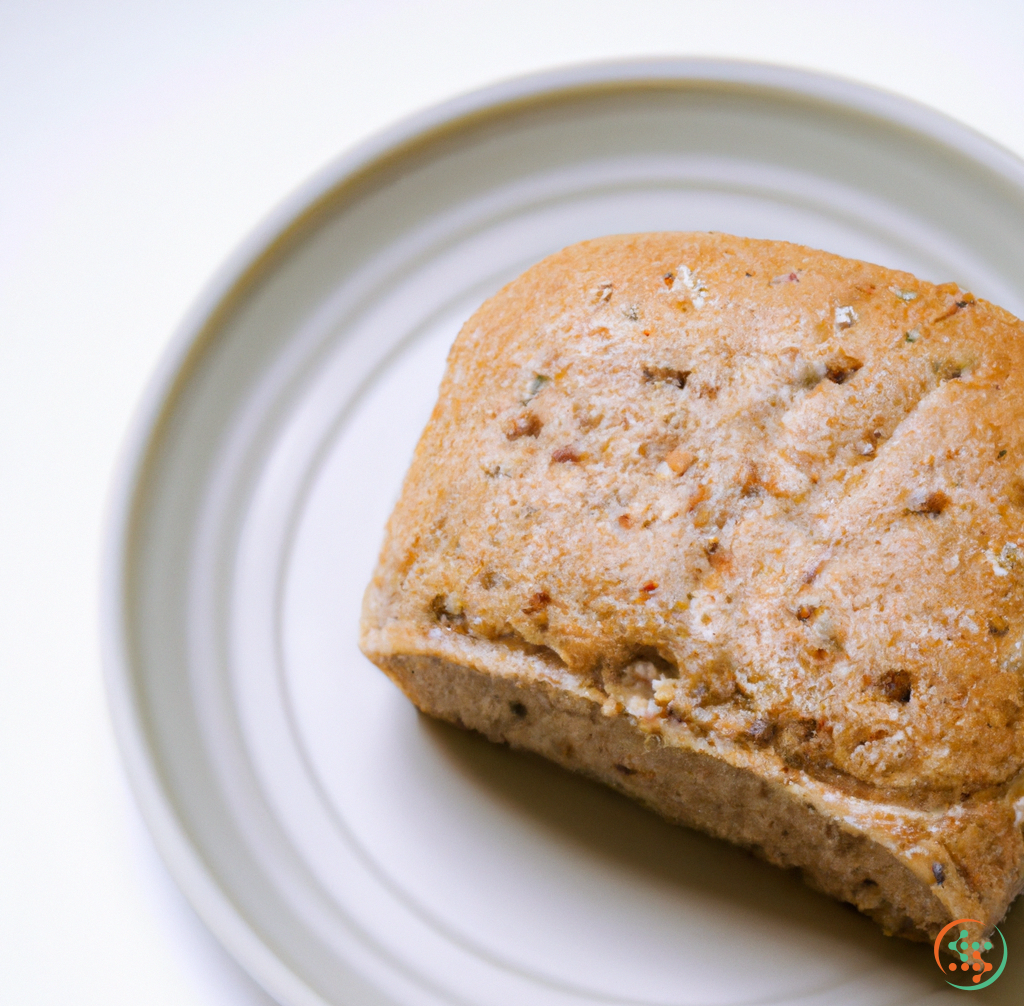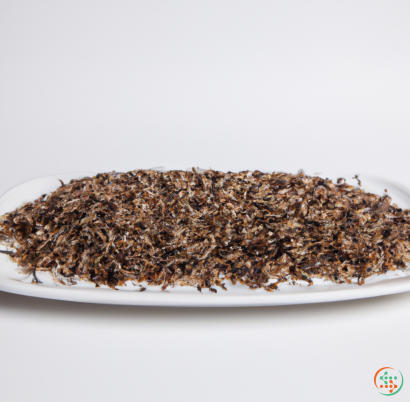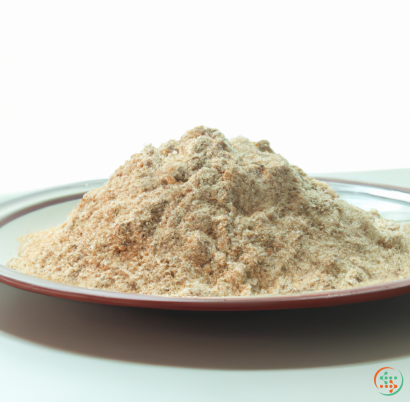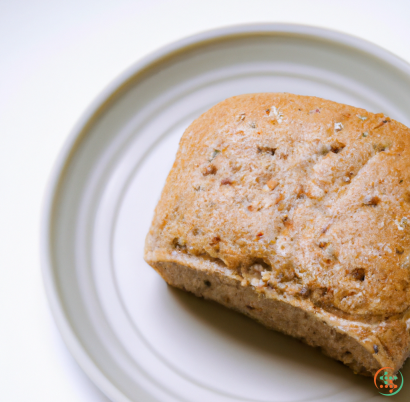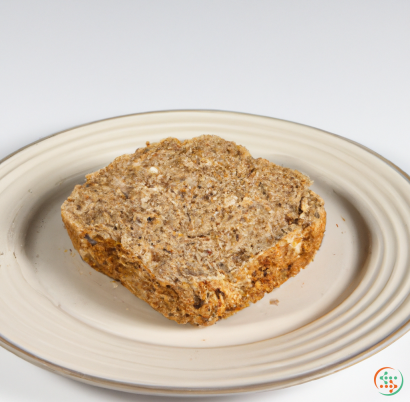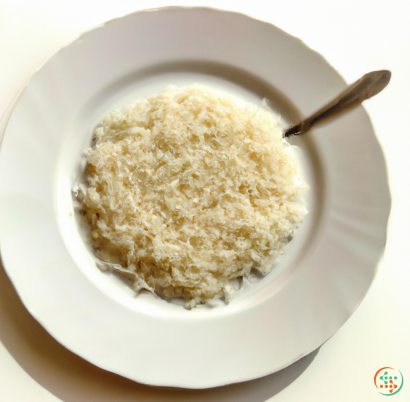Whole-wheat Bread
Whole-wheat bread has become an increasingly popular food item amongst those health-conscious individuals, who understand the importance of incorporating whole grains into their diet. Whole-wheat bread has far more nutrients than white bread and has been linked to a variety of health benefits, including a lower risk of cardiovascular disease and diabetes. In this article, we’ll explain what whole-wheat bread is and discuss the amazing health benefits that can come from consuming this healthy food choice.
What is Whole-Wheat Bread?
Whole-wheat bread is a type of bread made with wheat flour that contains the full grain - all of the bran, germ and endosperm. The bran, which contains dietary fiber, micronutrients and phytonutrients, is the outer layer of the wheat grain that is usually lost during refining of white flour. The germ, which contains zinc, magnesium, manganese, iron, thiamin and vitamin E, is the embryo of the kernel and is also lost in white-flour processing. The endosperm is the lightest and most consistent layer of the grain (containing mostly carbohydrates) and is often used to make white flour. The result? Whole-wheat bread is more nutritionally dense than white bread.
Nutritional Benefits of Whole-Wheat Bread
One of the main advantages of consuming whole-wheat bread is that it contains significantly more dietary fiber than white bread. In fact, one slice of whole-wheat bread contains around 3 grams of fiber, as compared to less than 1 gram in white bread. Dietary fiber helps keep you full for longer periods of time and helps you feel satisfied after meals. It is also important for digestive health and helps promote regularity.
Whole-wheat bread is also an excellent source of complex carbohydrates. Complex carbohydrates are the most recommended form of carbohydrates because they provide a steady, slow supply of energy throughout the day instead of the quick burst of energy that simple sugars like white bread can provide. Whole-wheat bread can also provide essential vitamins and minerals like Iron, Magnesium, phosphorus and selenium.
Whole-Wheat Bread and Health Benefits
Studies suggest that eating whole-wheat bread provides a number of health benefits. For example, one study found that people who consumed more whole-grains (like those found in whole-wheat bread) had a lower risk of death than those who consumed fewer whole grains. This is likely due to the combination of dietary fiber, vitamins and minerals found in whole-grains. Other studies have linked the consumption of whole-grains with a lower risk of type 2 diabetes, hypertension, stroke and other cardiovascular diseases.
Whole-wheat bread may also be beneficial for weight loss. Studies suggest that eating whole-grains can help reduce hunger and boost satisfaction after meals, resulting in fewer overall calories consumed. Additionally, the combination of dietary fiber and protein present in whole-wheat bread can help keep you feeling full longer, helping to boost your weight loss efforts.
Conclusion
Whole-wheat bread is an excellent alternative to white bread. It’s higher in dietary fiber and complex carbohydrates, making it a much healthier choice. It can also provide a number of health benefits, including a lower risk of cardiovascular disease, hypertension, stroke and even type 2 diabetes. Additionally, its high fiber and protein content can help keep you feeling full longer and increase your weight loss efforts. We highly recommend incorporating whole-wheat bread into your diet for a healthy and delicious alternative to white bread.
Whole-Wheat Bread: From Production to Plate
Whole-wheat bread is a staple food for many people around the world, providing a source of nourishment and comfort. But the journey from production to the dinner table is an interesting and complex one, involving a variety of ingredients, processes, and variations. In this blog post, let’s explore the fascinating journey behind the creation of whole-wheat bread and how it winds up on our plates.
Wheat Farming: The Start of Whole-Wheat Bread
If we want to understand the creation process of whole-wheat bread, we have to start at the very beginning, before anyone even thought of turning wheat into bread. Wheat is a key crop grown in countries around the world (although most production is focused in six countries in Asia and one in the Middle East). It is grown by farmers harvesting the seed heads (or spikelets) on the wheat plant that are then harvested and threshed to produce useful wheat grains.
Once the wheat has been harvested, it then needs to be milled. This is the process whereby wheat is transformed into flour – the key ingredient in every loaf of bread one will find at the store. Wheat grains are first cleaned of foreign material and then reduced to flour through grinding. There are two types of flours used in bread-making – the course bran-covered outer section of the grain is separated from the inner core and used separately.
Making the Dough
Once the necessary ingredients are in place, it’s time to move onto making the dough. This process involves combining water and yeast before adding in the previously-milled flour and salt. The dough is then kneaded to form a uniform mass of dough that can be shaped into a loaf. It’s generally recommended to knead the dough for several minutes in order to ensure a full development of gluten in the dough, which is important for the texture and structure of the finished loaf.
Once kneaded, the dough is left to rise. This process is key as it provides the bread with its characteristically light texture and flavor. The fermentation process used in bread production creates carbon dioxide that is trapped by the gluten proteins and proteins from the yeast. This allows the dough to aerate and increase in volume, which gives the bread its raised appearance and delicious flavor.
Shaping and Baking the Loaf
Once the dough has risen, it’s now ready to be shaped. This is when professional bakers use their skills to turn a blob of dough into a delicious-looking loaf of bread. Bakers usually either roll out the dough and shape it into a cylinder or roll into a flat ‘sheet’ and roll up from the ends.
Once shaped, the loaf is placed into a pre-heated oven, where it can take anywhere from 15-45 minutes to bake. This is largely dependent on the size of the loaf, as well as the amount of surface area exposed to the heat of the oven.
Once baked, the loaf is carefully removed and given time to cool and set before slicing.
Whole-Wheat Bread Packing and Shipping
Once the loaf is cooled, it’s now time to prepare it for shipping. Bakers must ensure they package the bread correctly and optimize it for transportation, so that it arrives fresh, with no damage. Smaller loaves are typically encased in plastic wrapping, which is used as protection against moisture. Larger loaves are usually transported in special cardboard cartons or crates.
It’s then time for the bread to be shipped or delivered to its destination. This journey can take many forms, from 18-wheelers on highways to smaller vehicles on city streets. Bread deliveries can even be made by bicycle in some cities and towns.
At the Supermarket
When the bread has arrived at its destination, the customer has ready access. Traditional grocery stores usually offer various options for buyers to choose from, ranging from pre-sliced bread to loaves made with added ingredients like nuts or seeds. It’s up to the customer to select the best and freshest loaf on display.
Enjoying the Delight of Whole-Wheat Bread
Once the customer has found their favorite loaf, it’s time to bring it home and enjoy it. The bread can be served as-is or toasted with butter, honey, jam, or other toppings. And, of course, the customer can enjoy it as an addition to their favorite sandwiches.
When enjoyed, the customer can appreciate the journey it took to get to the table, from the wheat fields, to the mill, the baker, the delivery truck, and then ultimately to their plate.
Conclusion
Whole-wheat bread is a staple food for many cultures, providing nourishment and a source of comfort. From the wheat fields to the bakery and the supermarket, it’s an incredible journey to savor. And when it’s enjoyed in all its golden deliciousness, one can appreciate the complexity and utilization of skill, knowledge, and care that went into creating every loaf of whole-wheat bread.
| Beta-Carotene | 0.002 mg | |
| Vitamin E | 0.00266 grams | |
| Vitamin K | 0.0078 mg | |
| Vitamin B1 | 0.39 mg | |
| Vitamin B2 | 0.17 mg | |
| Vitamin B3 | 0.00444 grams | |
| Vitamin B4 | 0.0272 grams | |
| Vitamin B5 | 0.65 mg | |
| Vitamin B6 | 0.22 mg | |
| Vitamin B9 | 0.042 mg |
| Calcium | 0.161 grams |
Daily Value 1.3 g
|
| Iron | 0.00247 grams |
Daily Value 0.018 g
|
| Magnesium | 0.075 grams |
Daily Value 0.4 g
|
| Phosphorus | 0.212 grams |
Daily Value 1.25 g
|
| Potassium | 0.254 grams |
Daily Value 4.7 g
|
| Sodium | 0.455 grams |
Daily Value 2.3 g
|
| Zinc | 0.00177 grams |
Daily Value 0.011 g
|
| Copper | 0.23 mg |
Daily Value 0.9 mg
|
| Manganese | 0.00217 grams |
Daily Value 0.0023 g
|
| Selenium | 0.0257 mg |
Daily Value 0.055 mg
|
| Glucose | 1.07 grams |
|
| Fructose | 2.21 grams |
|
| Sucrose | 0.03 grams |
|
| Lactose | 0.01 grams |
|
| Maltose | 1.02 grams |
|
| Total Sugars | 4.3 grams |
per 100g
|
| Capric acid (10:0) | 0.01 grams |
|
| Lauric acid (12:0) | 0.01 grams |
|
| Myristic acid (14:0) | 0.01 grams |
|
| Palmitic acid (16:0) | 0.44 grams |
|
| Stearic acid (18:0) | 0.23 grams |
|
| Arachidic acid (20:0) | 0.01 grams |
|
| Behenic acid (22:0) | 0.01 grams |
|
| Total Saturated fatty acids: | 0.72 g | |
| Oleic acid (18:1) | 0.58 grams |
|
| Palmitoleic acid (16:1) | 0.02 grams |
|
| Gadoleic acid (20:1) | 0.02 grams |
|
| Total Monounsaturated fatty acids: | 0.62 g | |
| Omega-3 Alpha-linolenic acid (18:3) | 0.14 grams |
|
| Linolenic acid (18:3) | 0.14 grams |
|
| Linoleic acid (18:2) | 1.45 grams |
|
| Total Polyunsaturated fatty acids: | 1.73 g | |
| Trans-monoenoic fatty acids | 0.02 grams |
|
| Total Trans fat: | 0.02 g | |
